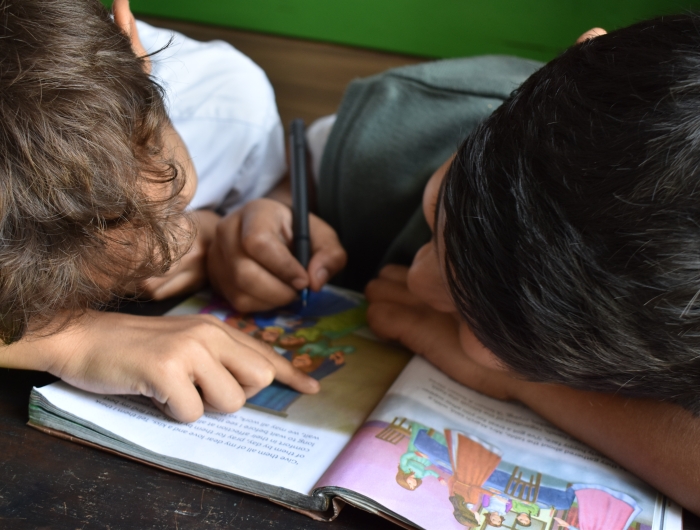New York makes steps toward Healthy School Meals for All

Andrew Ebrahim - unsplash.com.
Guest blog from Community Food Advocates and Hunger Solutions New York, co-leads of the Healthy School Meals for All NY Kids Campaign
As we head into the 2023-2024 school year, eight states across the country have now established permanent, statewide Healthy School Meals for All programs. These historic investments have brought countless benefits to students, families, schools, and communities. They also signal growing momentum across the country towards healthy school meals for all—a movement sparked by the loss of federal waivers in June 2022 that had allowed schools to serve free school meals to all students during the pandemic.
While New York has yet to join the cohort of states with permanent Healthy School Meals for All legislation, new state funding is available to some eligible schools this year. This is a significant stopgap towards expanding free school meals statewide as federal action to secure free school meals nationwide remains stagnant.
New York invests in free school meals – but only partially
In the most recent state budget, New York, for the first time, included nearly $135 million to create a state program designed to cover the cost of free school meals for all in schools eligible for the Community Eligibility Provision (CEP). CEP is a federal option that allows schools with a high proportion of low-income students to offer free meals to all their students, regardless of income. New York has boasted one of the highest uptakes of CEP in the country, exceeding 90% of eligible schools participating.
As a result of New York’s historic investment and coupled with strong participation in CEP, an estimated 550 more schools will adopt CEP in the 2023-2024 school year. There is also a pending federal rule that, if finalized, would enable more schools nationwide and an estimated 500 schools in New York to participate in CEP.
Too many students are still left behind
Even with this state expansion, furthered by federal changes, an estimated 1,000 schools in New York will be left behind this year. Schools with significant need—with one-third or more of their students living in low-income households—can still fall short of the CEP eligibility threshold, and thus remain unable to offer free school meals to all of their students.
This opportunity gap is especially evident in:
- rural areas where poverty is prevalent but not as concentrated
- areas with stark income inequalities
- communities with low participation in other means-tested programs like SNAP and Medicaid
Programs with income-based eligibility have inherent barriers, especially among historically marginalized groups where their services are most needed. Anything short of full funding for healthy school meals for all perpetuates an inadequate system based on arbitrary income thresholds, and barriers that jeopardize food access for vulnerable families.
Without a Healthy School Meals for All policy, schools and families must shoulder the administrative and financial burdens of a tiered, means-tested program. Schools must collect, process, and verify applications from thousands of families, then also contend with unpaid meal debt when families are unable to pay but do not qualify for free school meals. Among potentially eligible families there are still significant barriers to applying, such as social stigma and fear, especially for those who are undocumented.
By providing free school meals to all students through Healthy School Meals for All, we can eliminate these barriers. Moreover, the administrative and financial savings generated by Healthy School Meals for All would increase school nutrition departments’ capacity for innovative programming that can combat rising food prices, improve the nutritional quality of meals served, and better engage students (e.g. through nutrition education and farm-to-school initiatives).
New York must join in leading the way on Healthy School Meals for All
The progress in our state so far, and the success of full Healthy School Meals for All we have seen in other states this year, is thanks to the dedication of advocates and policymakers who are committed to fighting hunger and ending school food stigma. In New York, the Healthy School Meals for All NY Kids campaign is backed by the strength of 280 partners—advocates, educators, administrators, parents, and students—calling for a free school meals for all policy.
It’s long past time for New York to join California, Maine, Colorado, New Mexico, Vermont, Minnesota, Michigan, and Massachusetts in leading the way on this critical support for students, families, and schools.
This guest blog was written by the Community Food Advocates and Hunger Solutions New York, Co-Leads of the Healthy School Meals for All NY Kids Campaign. Click here for more information on the campaign.

